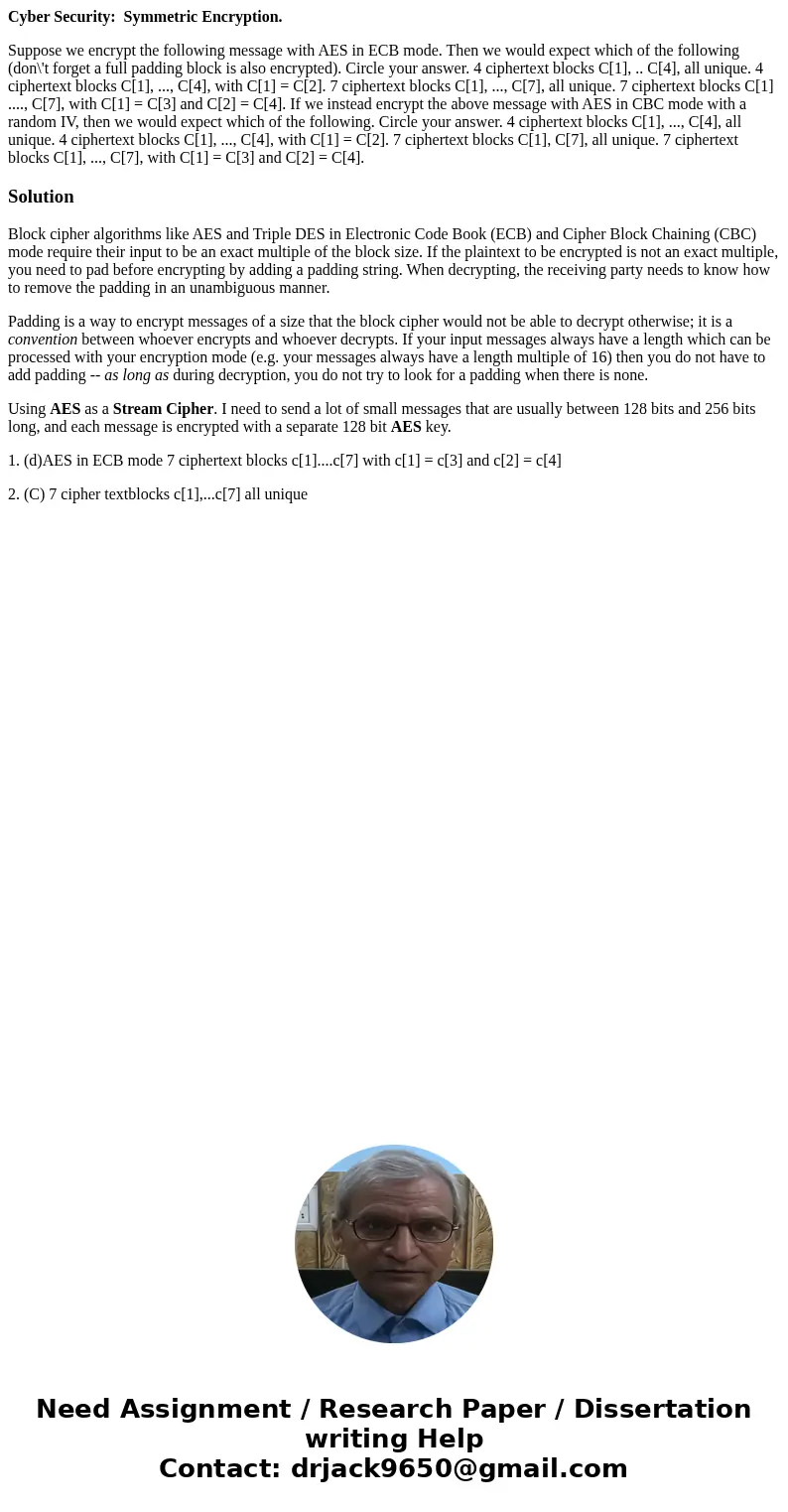Cyber Security Symmetric Encryption Suppose we encrypt the f
Cyber Security: Symmetric Encryption.
Suppose we encrypt the following message with AES in ECB mode. Then we would expect which of the following (don\'t forget a full padding block is also encrypted). Circle your answer. 4 ciphertext blocks C[1], .. C[4], all unique. 4 ciphertext blocks C[1], ..., C[4], with C[1] = C[2]. 7 ciphertext blocks C[1], ..., C[7], all unique. 7 ciphertext blocks C[1] ...., C[7], with C[1] = C[3] and C[2] = C[4]. If we instead encrypt the above message with AES in CBC mode with a random IV, then we would expect which of the following. Circle your answer. 4 ciphertext blocks C[1], ..., C[4], all unique. 4 ciphertext blocks C[1], ..., C[4], with C[1] = C[2]. 7 ciphertext blocks C[1], C[7], all unique. 7 ciphertext blocks C[1], ..., C[7], with C[1] = C[3] and C[2] = C[4].Solution
Block cipher algorithms like AES and Triple DES in Electronic Code Book (ECB) and Cipher Block Chaining (CBC) mode require their input to be an exact multiple of the block size. If the plaintext to be encrypted is not an exact multiple, you need to pad before encrypting by adding a padding string. When decrypting, the receiving party needs to know how to remove the padding in an unambiguous manner.
Padding is a way to encrypt messages of a size that the block cipher would not be able to decrypt otherwise; it is a convention between whoever encrypts and whoever decrypts. If your input messages always have a length which can be processed with your encryption mode (e.g. your messages always have a length multiple of 16) then you do not have to add padding -- as long as during decryption, you do not try to look for a padding when there is none.
Using AES as a Stream Cipher. I need to send a lot of small messages that are usually between 128 bits and 256 bits long, and each message is encrypted with a separate 128 bit AES key.
1. (d)AES in ECB mode 7 ciphertext blocks c[1]....c[7] with c[1] = c[3] and c[2] = c[4]
2. (C) 7 cipher textblocks c[1],...c[7] all unique

 Homework Sourse
Homework Sourse